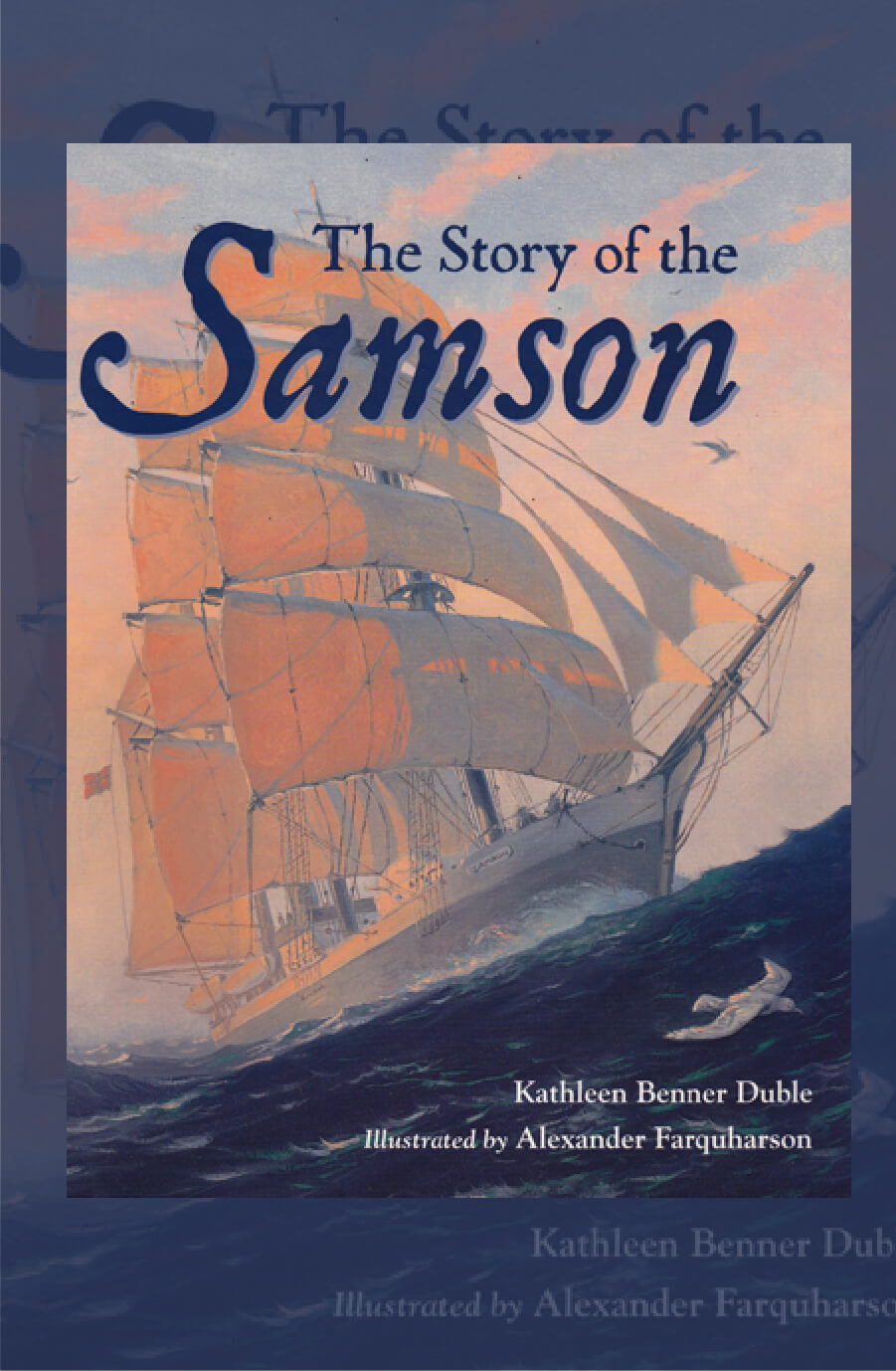Book Info: The Story of Samson
Publisher: Charlesbridge Publishing, June 2008
Age group: 7-10
Jacket illustration: Alex Farquharson.
Genre: Historical Fiction
To buy this book

The Story of Samson
The Social Studies Connection
The Samson touched Grandpa and Sam’s life in a deeply personal way, and while the boat is inanimate, it serves as a symbol of the human experience. Every day, we have a chance to affect someone in our lives. We can do this in a positive way with a smile, or negatively by criticizing others. THE STORY OF THE SAMSON presents the opportunity to talk to students about the way their lives move from person to person, leaving an impression behind and sometimes, changing lives.
Hands-On Activity: Begin with a discussion of people who have affected the world in great ways. Examples are: Mother Theresa, Ghandi, and Nelson Mandela. Have students create a chart, listing people whose lives they connect with daily. Have them reflect on the way they have affected that person, both positively and negatively. Encourage them to think of ways in which they could alter the effect they have on others so that the influence they have on them could change that person’s day or life.
The History Connection
The Samson was a part of an amazing number of historical events. It explored with Admiral Byrd, rescued two of Shackelton’s crewmembers, and was an exhibit at the 1933 Chicago World’s Fair. But history is not something that had to have happened decades or centuries ago. It is not something that happens only to people long dead and forgotten, but is a tangible part of the fabric of all of our lives. Many of us don’t realize that history is, simply put, yesterday, and that, like the Samson, we are all a part of it!
Hands-On Activity: Have students list several events they have already lived through. Encourage them to not only think nationally, but globally and locally. Discuss how these events have changed the world, their country or even the small town in which the students live.
The Science Connection
Technology is constantly evolving and changing, especially in the area of exploration. The computer on the first spaceship had the equivalent capacity of calculators today! Imagine going off to space with just your calculator! When Sam’s grandfather made his first voyage with the Samson, the instrumentation he would have used to navigate would have differed greatly from what seafaring explorer’s have at their fingertips now.
Hands-On Activity: Compare the scientific instruments of yesterday to today’s newer technology. Using the list below, have students research what today’s explorers use instead of these older navigational tools or how these same ones have improved over time.
| Sextant Celestial Navigation Compass |
Plumb Lines Chronometer Astrolabe |
Quadrant Sandglass Dead Reckoning |
The Art Connection
Man has always had a yearning to discover the “undiscovered.” But with the advent of the Internet and jet travel, our world has grown smaller, and the possibility to be a “true” explorer has diminished. Yet there are a few places still left relatively untouched by mankind: the very depths of our oceans and outer space.
Hands-On Activity: Have students draw what these uncharted areas might look like. What strange creatures might they encounter? What dangers might be lurking around the corner? What tools would they take with them to ensure their safety as they went on these dangerous undertakings? Can they imagine a world few people have ever witnessed? How do they envision it?
The Language Connection
True explorers cannot anticipate what they might discover or what they might actually need on their journeys. Unexpected dangers, unseen hazards, unforeseen circumstances can all alter the good intentions the explorer had at the beginning of the expedition. Imagination is as much a part of an explorer’s world as it is of a writer’s world!
Hands-On Activity: Give the students the following first line. “He stepped off into that unknown world and knew that he would never be the same.” Now it is the students’ turn. Using this line and the best of their imaginations, have each student write a short story about this explorer. They can place the story either in the past or the present or future. They are limited only as far as their imaginations wish to explore!


